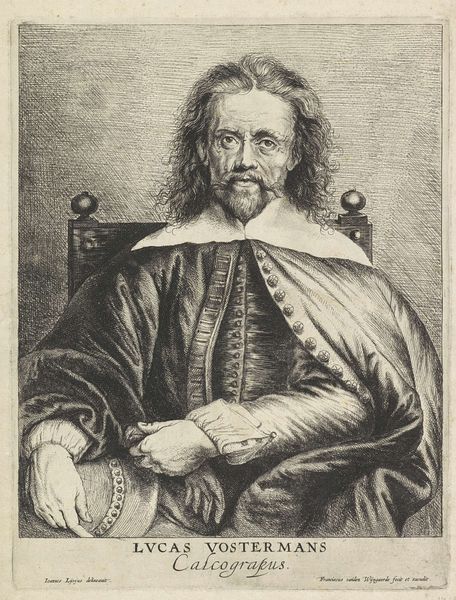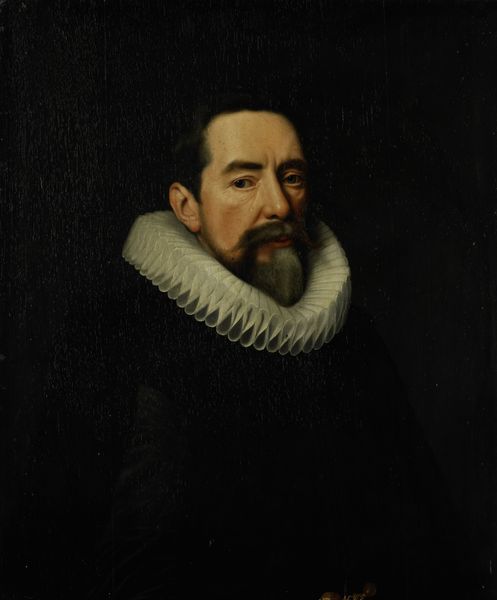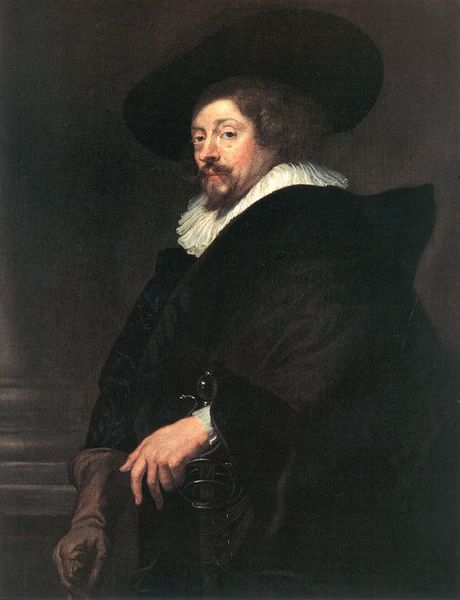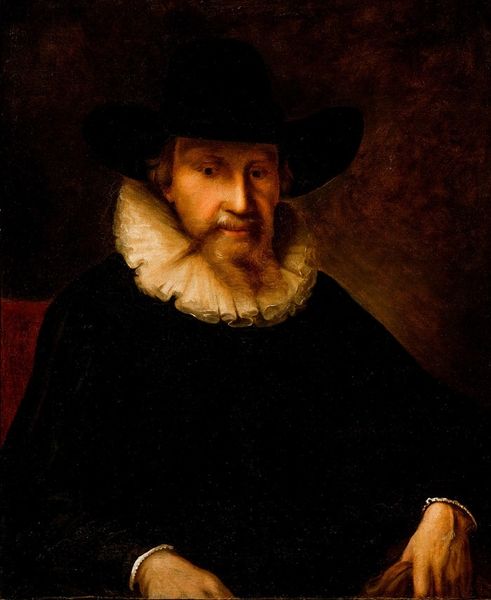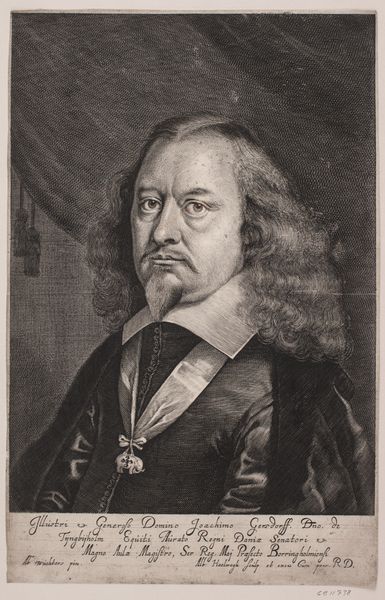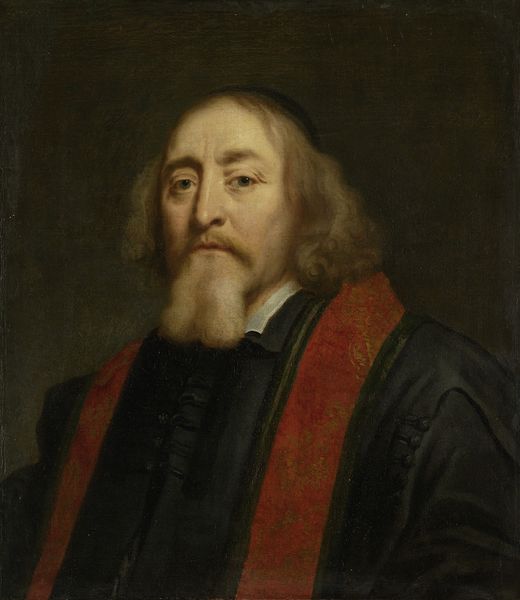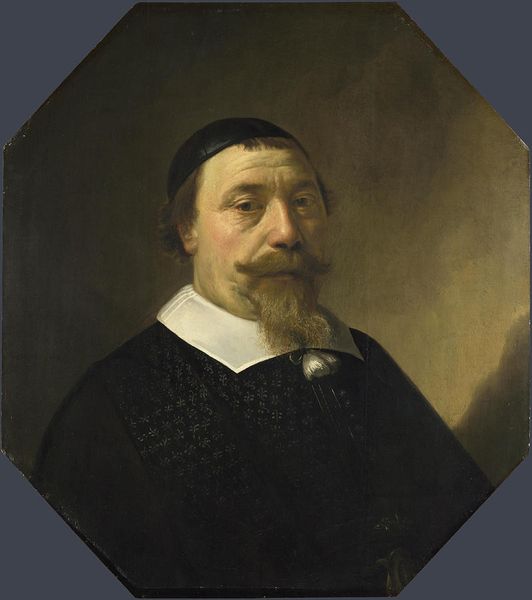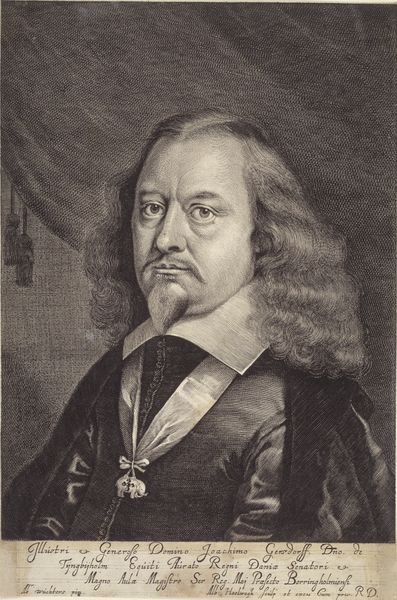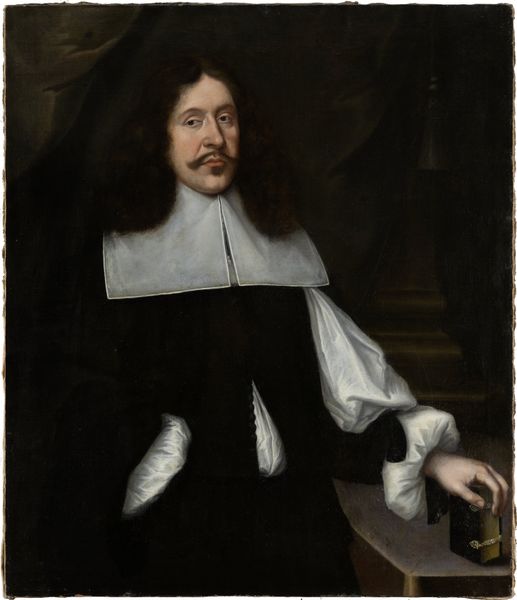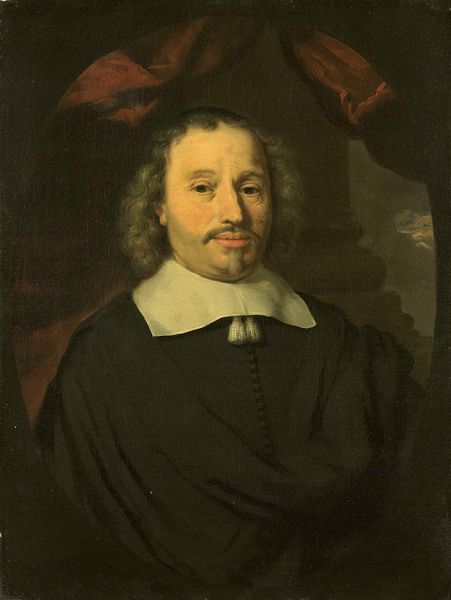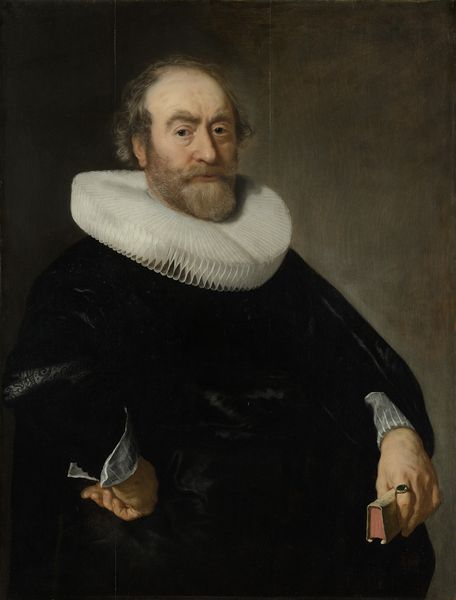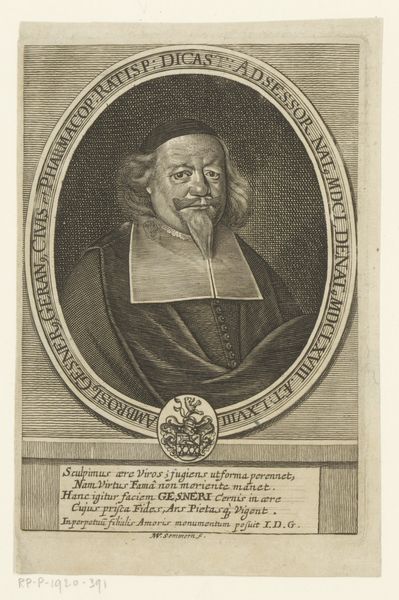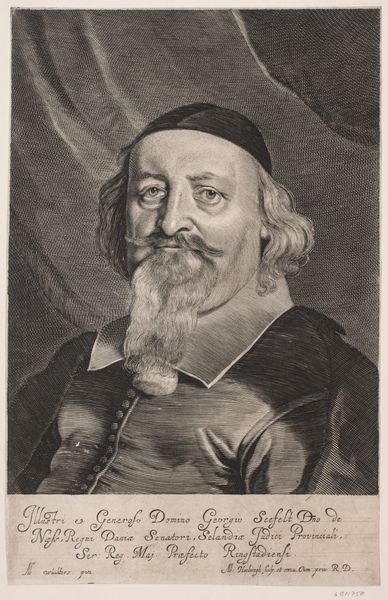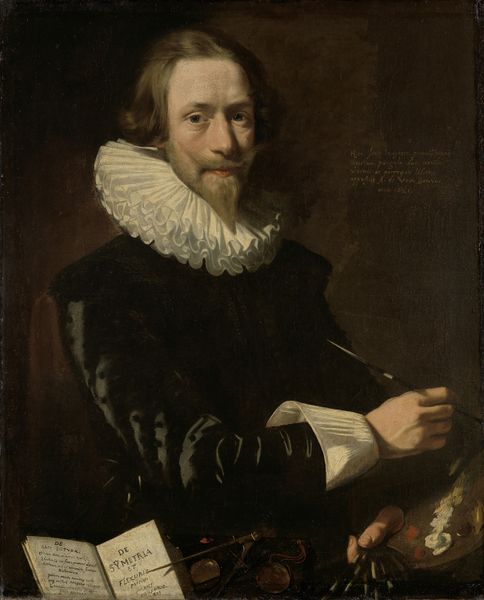
Portrait of a Grand Master of the Knights of Malta, Martin de Redin c. 1660
0:00
0:00
painting, oil-paint
#
portrait
#
baroque
#
painting
#
oil-paint
#
history-painting
Dimensions: 36 1/4 × 28 7/8 in. (92.1 × 73.3 cm)
Copyright: Public Domain
Curator: Standing before us is Mattia Preti's "Portrait of a Grand Master of the Knights of Malta, Martin de Redin," created around 1660. A commanding oil on canvas now residing here at the Art Institute of Chicago. Editor: My goodness, what a presence! He seems to be emerging from a shadowy corner of history. The high contrast creates such a sense of gravity, almost as if he's judging my hat choice. Curator: That darkness, characteristic of Baroque painting, really does contribute to the painting's dramatic intensity. But consider, too, how Preti employs it to elevate de Redin’s status, doesn't it feel like a stage? De Redin served as the Grand Master of the Knights Hospitaller—a rather significant role—and portraits like this were vital to reinforcing the Order's power. Editor: Definitely a stage! Look at the texture – or lack thereof. Everything melts into the darkness around him. The face feels like it's searching through the dark. It also softens what might otherwise feel like severe militarism, doesn't it? Makes you wonder, what was he like, beyond the regalia? Curator: It’s hard to escape the history tied up in every detail: the somber colors, the very precise depiction of his robes of office… everything about this says "authority." Preti had a knack for capturing both the dignity and the internal life of his subjects. De Redin’s focus goes a long way. Editor: Yes, that direct gaze really pulls you in. I imagine, then, that these works served as important tools in constructing and maintaining the Knights' image? Symbols become all the more powerful. Curator: Precisely! In the context of Malta’s strategic importance during this era, controlling its visual representation was essential. Portraits reinforced legitimacy, solidified power... de Redin stares off at his command! Editor: So, through skillful brushwork, he captured more than just a likeness; he bottled a moment in a complex power dynamic, projecting authority and ensuring it echoes through time. I do think, on the stage he created, the details speak of an actual human being as well! Curator: Absolutely, the subtle modeling of the face suggests a character. Thank you! Editor: Always a pleasure.
Comments
No comments
Be the first to comment and join the conversation on the ultimate creative platform.
